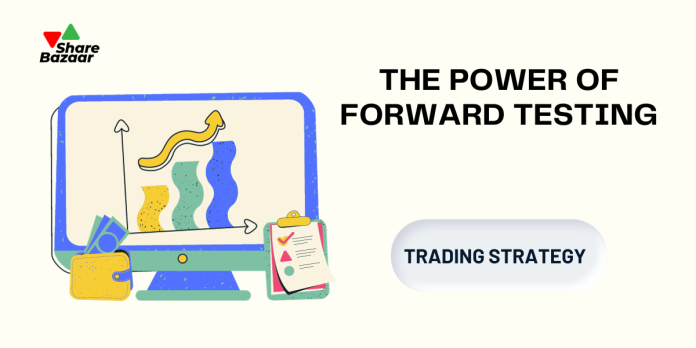In the world of technical analysis, backtesting is a very important and well-known tool. However, from my perspective, forward testing is equally important and should be a mandatory activity. Often overshadowed by its counterpart, backtesting, forward testing plays a pivotal role in developing a robust and profitable trading strategy.
If you are wondering what forward testing is let me clear this first while back testing simulates trading using historical data, forward testing simulates real-time trading with the previously tested strategy. In this article, we delve into why forward testing is essential, its key components, and how to conduct it effectively.
The Significance of Forward Testing:
While back-testing is invaluable for establishing the potential of a trading strategy, it cannot fully replicate the complexities of real-world trading conditions.
Forward testing bridges this gap by considering factors like psychological reactions, technical nuances, and unexpected market movements. It helps traders gauge how their strategies perform under real-time pressures and adapt accordingly.
Components of Forward Testing:
Trading System: A well-tested trading strategy forms the foundation of forward testing. This strategy should encompass entry and exit points, stop loss, profit targets, and criteria for exiting unprofitable trades.
Demo or Live Account: Beginners can start with a demo account to grasp market dynamics, while experienced traders can forward test in a live account with modest capital.
Trading Journal: Maintain a trading journal detailing each trade’s parameters, outcomes, and reasoning. This data aids in evaluating performance and refining the strategy.
Conducting Effective Forward Testing:
Discipline: Execute trades in accordance with the predefined rules of your trading system. This practice cultivates discipline, a vital trait for successful trading.
Risk Management: Limit risk to 0.5-2% of equity per trade. This mitigates potential losses and ensures you can assess the strategy over enough trades.
Sample Size: Execute at least 100 trades to gather substantial data for analysis. For higher time frame strategies, extend testing to 1-2 months on various currency pairs.
Read: Kelly Criterion – The Vitamin of Money Management
Analysing Results:
Comparison: Compare forward-testing results with back-testing outcomes. Consistency between the two suggests a reliable strategy, while discrepancies warrant investigation.
Identifying Deviations: Significant differences between back-test and forward-test results may stem from missed opportunities, improper testing, or changing market conditions. Address these to refine the strategy.
Adaptation: Use test outcomes to identify strategy strengths and weaknesses. Adjust the strategy’s risk-reward ratio or other parameters as needed to optimize performance. In short, forward testing’s role is paramount in bridging the gap between theoretical strategies and real-world trading. It exposes traders to the psychological and technical challenges of live trading, allowing them to refine their strategies for optimal performance.
By combining the insights gained from both back-testing and forward-testing, traders can create adaptable and profitable trading strategies, thereby enhancing their potential for success in the dynamic world of financial markets.
Remember, perfection is unattainable, but the continuous improvement spurred by thorough testing can lead to enduring success.
Disclaimer: This blog has been written exclusively for educational purposes. The securities mentioned are only examples and not recommendations. It is based on several secondary sources on the internet and is subject to changes. Please consult an expert before making related decisions.


